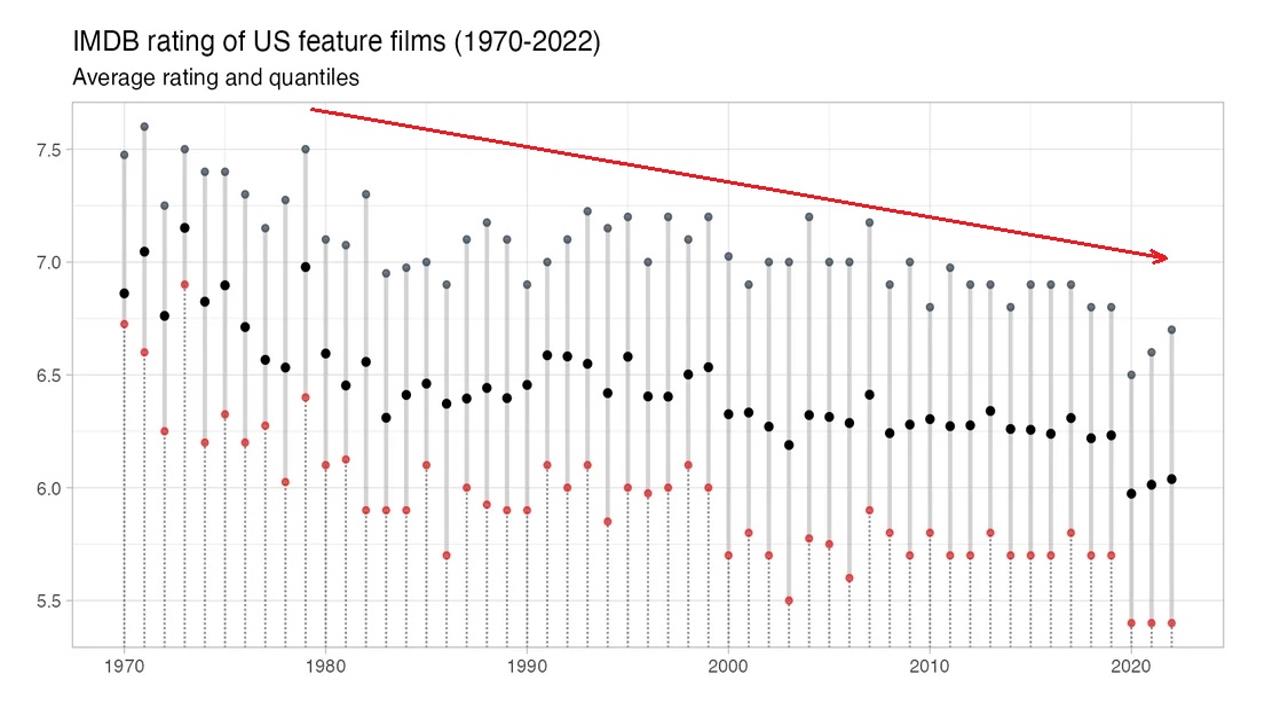Video:
Take our online poll:
AI Analysis:
Several factors contribute to the recent decline in blockbuster movies:
1) Streaming Services and Home Entertainment: The rise of streaming platforms like Netflix, Amazon Prime, and Disney+ has provided audiences with a vast array of content at home, affecting traditional box office attendance.
2) Changing Consumer Behavior: Audiences now have diverse entertainment options, including video games, social media, and online content. This shift in consumer behavior has impacted the demand for traditional blockbuster experiences.
3) Franchise Fatigue: Some long-running franchises have faced fatigue as studios produce multiple sequels or spin-offs. Audiences may become disinterested if the quality or novelty diminishes.
4) High Production and Marketing Costs: Blockbusters often come with high production and marketing costs. The pressure to recover these expenses can lead to risk-averse decision-making and a focus on established franchises rather than original concepts.
5) Pandemic Impact: The COVID-19 pandemic significantly disrupted the film industry, with theaters closing, productions halting, and release schedules being delayed. This has affected the timing and success of blockbuster releases.
6) Quality of Content: While some blockbusters have achieved critical and commercial success, others have faced criticism for prioritizing visual effects over compelling storytelling. A lack of innovation or creativity can impact audience engagement.
7) Competition with Other Media: Blockbusters face stiff competition not only from other films but also from various forms of entertainment, including high-quality TV series, gaming, and online content.
8) Diversity in Content Preferences: Audiences today seek diverse and inclusive stories. The traditional blockbuster formula may not always align with the evolving tastes and preferences of a global audience.
9) Cinematic Universe Saturation: The proliferation of cinematic universes and interconnected storytelling across multiple films may result in oversaturation, diluting the uniqueness of each individual blockbuster.
10) Rise of Independent and Mid-Budget Films: Smaller and mid-budget films have gained recognition for their storytelling and artistic merit. Audiences and filmmakers are exploring a wider range of content outside the blockbuster model.
It's important to note that the decline in blockbuster movies does not mean the end of big-budget productions. The industry is evolving, and studios are adapting to new trends and audience preferences, exploring different formats and distribution models.
Chart:

References:


Comments